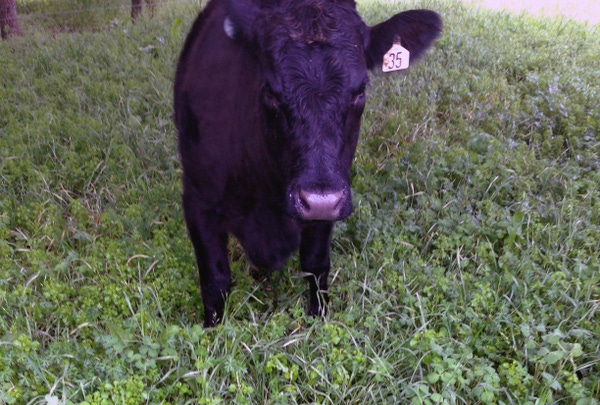March 17, 2016

I remember the first time I saw it; a gentleman said he had a plant growing under his fig tree in the farm yard that stung him when he touched it.
Sure enough, it was Southern Stinging Nettle. It was about 20 years ago, but I continue to see it more and more. It loves to grow in pastures where soil isn’t tilled, especially along fencerows maybe where there’s a little shade. The message today is to be aware of it, be able to identify it, stay away from it and control it if possible.
Now in late winter and early spring is the time when we see a lot of it. It’s a low growing, tender plant with roundish scalloped leaves that don’t look harmful, until you look very closely to see the tiny tubes of poison glistening in the sun. When you or an animal brush against them, they break and almost like a hypodermic needle, inject the poison. These hollow stinging hairs are on the leaves and stems of this plant are called trichomes.
A couple of years ago I brushed the back of my hand against some of this fiery weed inadvertently in a pasture while I was examining some Bahia grass plants. I looked closer to see the culprit that had been tromped on by cattle hooves but still packed a punch. It caused a red rash and stung and burned my skin for several days.
We once had a young lady that had a show steer in a nice pen and shelter but there was some of this bad boy growing up next to the fence where the steer was. She got into this weed in a bad way and had to spend a night in the hospital to get over it.
I’ve heard that you can eat this weed if it’s prepared correctly and it’s good to eat it or use it in some fashion since it has medicinal properties. Reports are that ancient Greeks used it, and folks today have uses for it for everything from prostate problems and hair loss to alieving muscle aches and pains.
Some folks around the world say it tastes like turnip greens. Also, it’s reported that the plants can be used as a fiber to make cloth. Due to a cotton shortage in World War I, German army uniforms were made from it. Please don’t use it for anything straight from the field as it is dangerous stuff to be around.
Miller County Georgia Agent Brock Ward and I were discussing controlling it earlier this year when a goat farmer was complaining about it in his pasture. He had done some spot sprays with glyphosate that were effective. Other pasture herbicides are quite effective as well. Most effective options in a pasture include anything with picloram (Grazon P + D) or aminopyralid (Milestone, Surmount). You have to be careful with these chemistries around peanuts and other legumes.
I wouldn’t recommend hand pulling this weed unless you have some real good gloves, but the problem with that is if you handle the exterior of the gloves later it could affect you. A hoe or other tillage would be effective in small areas but watch for it growing back in the same areas no matter what you do. One reason it continues to grow in an area is that once an animal that may want to graze it touches it once, they leave it alone thereafter, of course.
This plant grows from 4 to 20 inches tall but usually grows draping over surrounding plants, not a lot of structure to it. It has tiny greenish flowers that aren’t very noticeable. The range of this particular native species is southern Ohio, Kentucky-Illinois west to southeast Kansas, south to central Florida, Texas, Louisiana and Mexico.
I like to say that we learn from experience and from our mistakes, but I’d rather learn from other people’s mistakes than from my own. So maybe you’ll learn from my mistakes with this plant.
You May Also Like




